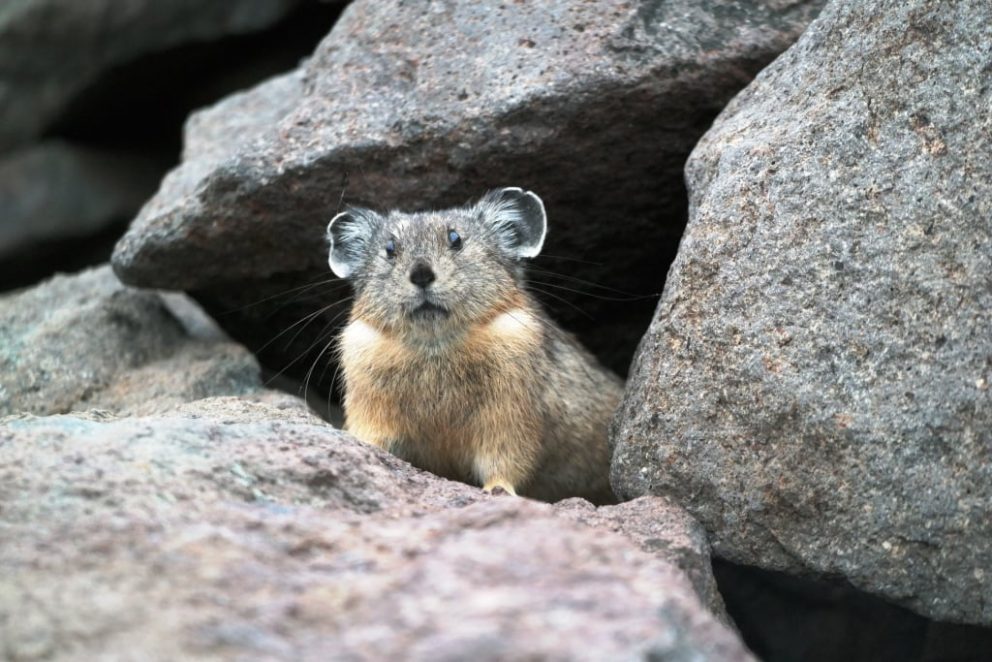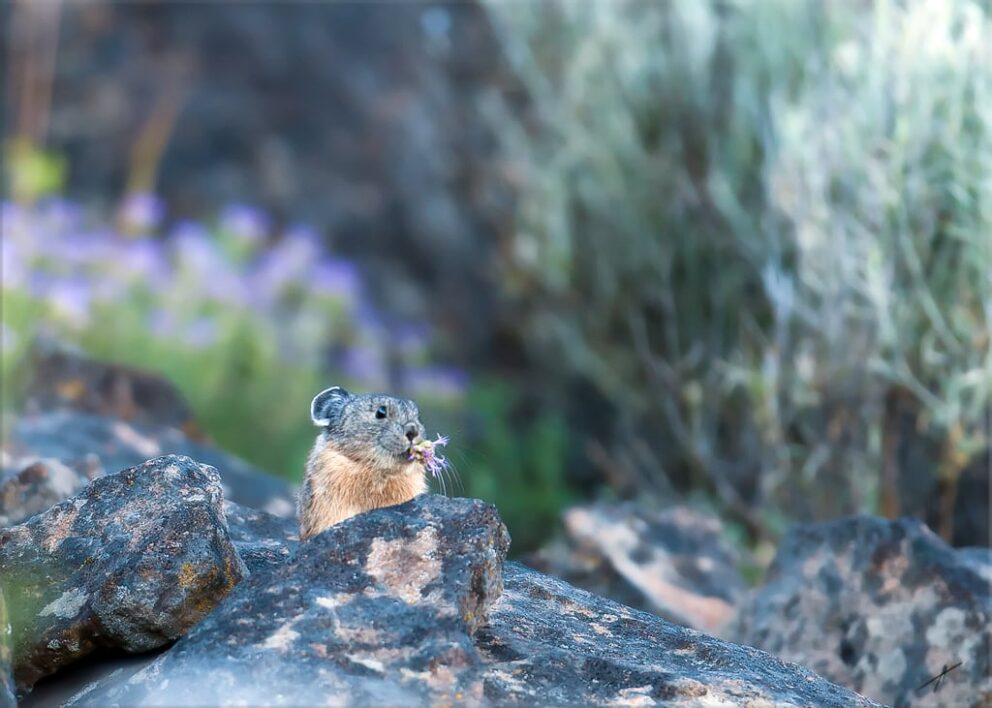- SCIENTIFIC NAME
- Ochotona princeps
- CLASSIFICATION
- Mammal
- LIFE SPAN
- 3-7 Years
- SIZE
- 6-8” | 0.3-0.4lbs
- STATE CONSERVATION STATUS
-
- Priority Species
- State Protected
- FEDERAL CONSERVATION STATUS
- Least Concern
- GAME STATUS
- Non-Game
- GAME TYPE
- None
- Washoe
- Humboldt
- Pershing
- Churchill
- Mineral
- Lyon
- Douglas
- Carson City
- Storey
- Elko
- Lander
- Eureka
- White Pine
- Esmeralda
- Nye
- Lincoln
- Clark
Habitat & Range
Pikas live primarily in rocky slopes near alpine meadows and rolling hills, but are also sometimes found along streams in rocky areas and in lava fields that are near a great food source.
- Alpine and Tundra
- Alpine forests of the Sierras
Threats
- Predation
- Temperature Extremes
Resources
| 2019- 2022 Pika Atlas | View |
Natural History
Pikas are found at high elevations, and are not very heat tolerant, for this reason they are a good indicator species for climate change within their habitat. Pikas are very vocal animals, using calls and songs to communicate with other members of their colony. They emit high pitched warning calls to signal potential threats. And males will use song to attract females during the mating season. Pikas are individually territorial, so juvenile survival is dependent on their ability to find and colonize a vacant territory, which are scarce. They are often times difficult to spot, due to their camouflage and being quite elusive. However, you may hear their characteristic high pitched “meep” alarm call. Pikas are herbivores, consuming foods such as forbs, grasses, and flowering plants. They harvest and store food for winter consumption, these food stores are called “haystacks.” They are active year-round and survive long winters thanks to their food storage ability. Pikas form mated pairs each Spring and females can give birth to two to four young (called “pups”) twice in a year. These little pups are ready to forage and live on their own by four weeks old!
Fun Facts














